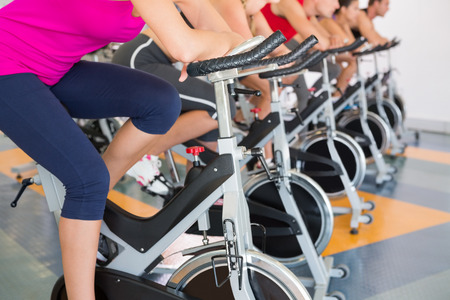| Coach Nicole on the treadmill with Coach Bob collecting data. Photo by Dina Griffin. |
Today I got a Metabolic Efficiency Test with Bob Seebohar and Dina Griffin of Fuel4mance. Let me recap the background on why I did this. I recently started focusing on my metabolic efficiency because I will be training for 2011 Ironman Arizona. December 1st I embarked on a study with some help from the book Metabolic Efficiency Training, TrainingPeaks, and Kelly Ping, RD, at the UCCS Peak Nutrition Clinic. You can find the results of my 3 week study here. With positive results, testing was the next logical step to see some real physiological numbers to help dial in my training. So here’s a brief summary of the test and my results.
The testing protocol
Athlete (in this case me) is in a fasted state (~12hrs) gets hooked up to a metabolic cart. What this means is that all breathing is done through a mouthpiece so all the expired gases get collected by a gas analyzer. Based on the CO2 and O2 ratios, the number of calories from carbohydrate and fat being burned is calculated.
 |
| The treadmill and Dina setting up the metabolic cart |
The athlete warms up and initial data is evaluated. This is to make sure the cart is working properly, and to monitor the athlete’s physiological response to the warm up.
Once a sufficient warm up is obtained, the test begins with data collection over 5 minute intervals. Every 5 minutes the pace is increased, in my case 0.3mph. Heart rate was also monitored.
When the percentage of calories from fat goes below 50%, the pace is slowed back down to the warm-up pace to see how long it takes to return to a predominately fat-burning state.
The results:
The results shown above show that I do have a Metabolic Efficiency Point, or a pace/heart rate at which my body burns more carbohydrates than fat, meaning at some point it does actually burn more fat than carbohydrate. You might notice that there are a couple points that are floating around 50%. This is good – it means that my body has a bit of a range before it decides to switch over to the carb burning. Once it does turn it on, it goes pretty quickly.
Another piece of very useful information from this test is the acutal calories burned at each pace. I get the break down of calories by carbohydrate and fat, and a recommended caloric intake (10-30% of calories burned) per hour. This gives me an upper level of fuel consumption, which for me, is under 200 calories per hour at the higher intensities. The lower limit is around 50-60 calories an hour across all intensities. (That lower limit is about half a gel packet per hour…)
In summary, this test confirmed that I do have a metabolic efficiency point, so am therefore “metabolically efficient.” I am successfully training my body to burn more fat. The goal now is to work, via nutrition and proper training, to shift the crossover point tto the right, so to faster paces. This test provided me very interesting data and I will utilize it (with my coach) to prepare for Ironman Arizona, and hopefully continue to see improvements in my body composition.
For some more photos and a more play-by-play view of the testing experience, visit my personal blog at http://bananadeath.blogspot.com/
Coach Nicole is the author of The Triathlete’s Guide to Race Week. She is also the founder and head coach for NEO Endurance Sports & Fitness, a Colorado-based endurance sport coaching company. She is a USAT Level 1 Certified Coach and also coaches triathlon for Team In Training. Learn more at https://neoendurancesports.com/. You can contact Coach Nicole on facebook, twitter or via email at nicole@neoendurancesports.com.









4 comments
Very cool, Nicole!
Where was your HR and Pace when you hit ME? Was it where you thought it would be based on your Perceived Exertion? Once you are running a lot more (IMAZ Training!), will you have to go back to be retested?
Hi Scott at the MEP my HR was 175bpm at a 10:10 pace. HR was much higher than I'd expect for that pace…has been 15-20bpm lower in the past. But perceivied exertion seemed to shift harder at the ME point so that made sense. I still need to figure out my plans to get retested, but right now this gives me some good info for IMAZ base training.
"Coach" Mark looks forward to stoking you with excess fat to burn.
Comments are closed.